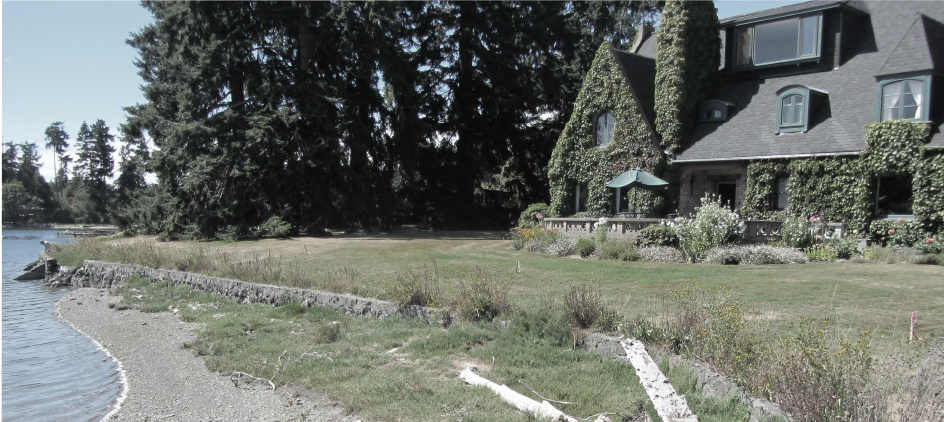Powel Property, Bainbridge Island
Today, the beach is back to its nearly natural state, thanks to a major restoration project that carried off debris and replaced thousands of invasive plants with salmonberry, salal, and other native vegetation. Over time, Chinook salmon have returned to the coastal shallows, along with many other species of marine life.
The armoring of the site began in the 1930s with the previous owner—despite the property’s sheltered location in Port Madison Bay, where erosion is minimal. Over the decades, the bulkheads and walls fell into disrepair.
The Powels, who have lived on the property since 1954, faced a choice: replace the bulkheads at a cost of more than $500,000 or find a more ecologically responsible solution. They ultimately teamed up with the Bainbridge Island Land Trust to restore the shoreline, with significant funding support from the Puget Sound Acquisition and Restoration Fund and help from other organizations and volunteers.
The Powel property has become a model of shoreline stewardship, not just for Bainbridge Island—where bulkheads still line more than 50% of the waterfront—but for the entire Puget Sound region.
Watch this video to learn more about the Powel project. Watch it on YouTube instead.
"Every member of the Powel family has been involved in this project, showing a strong love and devotion for their property and Puget Sound."Brenda Padgham, Bainbridge Island Land Trust Fish and other marine life have returned to the coastal shallows since the restoration was completed.




